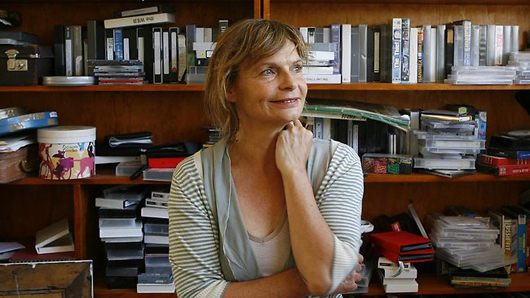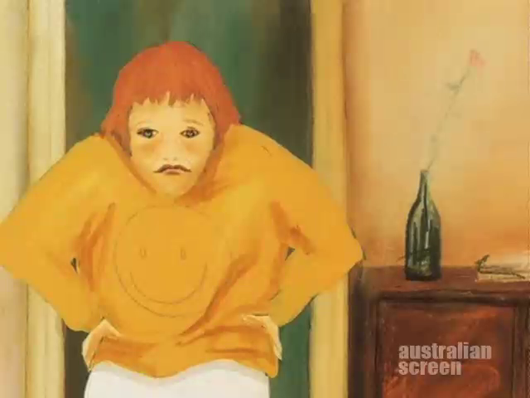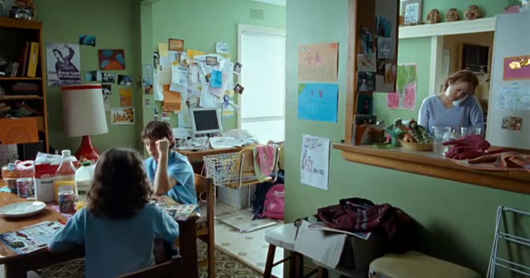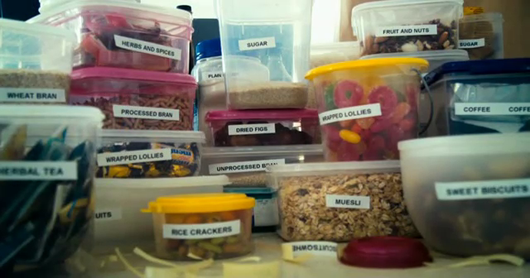Women in film: Sarah Watt
By Nathania Gilson This week, I'm taking an opportunity to re-discover and perhaps even re-introduce some of much loved Melbourne filmmaker Sarah Watt's work to CWC's readers.
Sarah Watt, via the Herald Sun website.
The gap that was left in Australia's circle of female storytellers following her death is one that also signifies a loss in the way of pioneers who were trying to modernise the country's disconnected national identity in film. Watt's animated shorts and feature lengths were refreshing and compelling in that they were trying to conjure powerful images of urban Australia: the depiction of a Melbourne we knew to be true filled with characters of all age groups who were familiar, relatable, and as complex and interesting to watch as the people one might catch the train home with everyday.
Stills via the Australian Screen website.
Her early work, animated short films, such as Small Treasures and Living with Happiness were true labours of love using a skill that she both excelled and found catharsis in. They were both extremely personal stories of motherhood, drawing upon Sarah's own experiences of having children. Beautiful painstakingly animated animation cells depicted the anxieties, frustrations and unpredictability of having a baby and maintaining a sense of yourself before and after birth. These films were not short of Watt's subtle humor infused with surreal daydreams and visual poetry proving her artistic talent, creative ability and knack for being able to find the humor and compassion asked of people in even the most difficult and awkward of situations.
Art had always been a way for Sarah to express her innermost thoughts, and for something she speaks openly about ‘failing miserably at’, it has been a way for her to share moments of her life with us in visual diary form, blurring the lines between reality and fiction; the fantastical and mundane as she conjures her own version of reality for us: one that may be filled with explosions, shark infested waters, and the imminent end of the world at any given second, but is rooted in a kind of reality that reminds us of of our families, house hold pets, and a quiet moment to ourselves when we most need it.
Small Treasures in particular was a triumph for her, being her first project post-graduating from film school forshe acquired funding through the Australian Film Commission and went on to impress the audience at the Venice Film Festival in 1995.
Image at left from here, image at right from the SMH website
Her next big project almost ten years later, the semi-autobiographical Look Both Ways marked an exciting shift in her career: an advancement into the world of live-action feature film. Possibly one of the most underrated Australian films in the last decade, the story follows six Australians dealing with life, loss, love, and pregnancy in the wake of a horrific railroad accident in their local inner-city suburb. Punctuated by some incredible hand-drawn animation and moving photographic sequences, the narrative is unique in its navigation of a feeling tottering between the gap along happy/sad, charming hints of Woody Allen-esque neurotiscism (especially in Justine Clarke’s performance reminiscent of a young Diane Keaton), and the poignant observations of Lynne Ramsay’s early work.
There is nothing patronizing or preachy about a story that deals with such heavy-handed issues which is something I admire about how Watt approaches her stories and the characters who live within the world she creates -- she is not telling us how to feel but instead reassuring us that everyone has their own way of dealing with things, and that it’s okay to feel a bit lost; to not know the exact thing to say or do in a life-changing situation, and that we’ll find our way back to what we need to do when time is right.
Stills from My Year Without Sex
My Year Without Sex, Sarah’s last film, was intended as a second installment to a trilogy which began with Look Both Ways. Based on a friend’s battle with cancer and perhaps mirroring some aspects of her own experiences following her diagnosis, the story is set against the suburban backdrop of Melbourne’s western suburbs that Watt had wandered, lived in and photographed herself for almost twenty years, we delve headfirst into a twelve month journey with Natalie (Sacha Horler), Ross (Matt Day) and their two children (played by Portia Bradley and Jonathan Segat). The film truly embodies Sarah’s ability to find beauty in the most unlikeliest and everyday places, reflected in the meticulous attention to detail taken with the production design of locations such as the family’s Footscray home, detailing the rainbow collage of clothing, artifacts, and furniture that refute the IKEA catalogue lifestyle foreign to most suburban families, based in part on Watt’s own family home as some photographic evidence has proved. We follow the family through 7-11s, supermarkets, football fields, churches, backyards, bedrooms, workplaces, hospitals, dinner tables, and living rooms, witnessing the sweetest, saddest and sometimes funniest moments of these characters lives, all based on people the director herself knew at some point in her life. For those of you who haven’t yet watched this one, highly recommended as a starting point to get to know the accomplished and compassionate Mrs. Watt, and figure out a lot about the things that she based her entire career around, allowing it to inform and enrich her work, rather letting it defeat her and her ingenuity.
Thank you, Sarah Watt, for your stories, your generosity of spirit, and everything you taught us about making art and living life whilst you were with us.
It should also be mentioned that Sarah has spent quite some time during her career working with NFSA who have helped preserve her work, including some of her animation cells from Look Both Ways which she generously donated a few years ago, and will continue to in the decades to follow. The National Film and Sound Archive is dedicated to collecting, saving and making accessible Australia’s rich cinematic and televisual culture to the general public. To visit the centres, and view some of the work I’ve discussed in this post, locate your nearest access centre here.
As an additional bonus, listen to a forty minute interview with Sarah Watt with Margaret Throsby in 2009 (right-click and ‘save as...’ or stream directly on your web browser) following the theatrical release of her film, My Year Without Sex.
Nathania Gilson is a young filmmaker living in Melbourne, Australia. She has spent the last three years working on a number of short films, music videos and documentaries. Her side projects involve curating content for independent publications, adventuring and maintaining the ability to function on minimal sleep. She is excited about the future.









